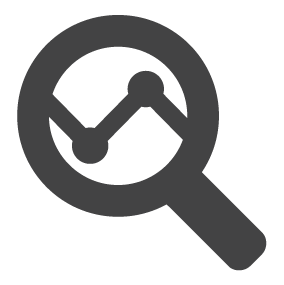Topics: Sleep Apnea, cpap
Sleep disorder is a common term used to define any trouble a person faces while falling or staying asleep. There are many types of sleep disorders that a person may experience. The most common sleep disorder is sleep apnea, which is characterized by intermittent cessation of breathing due to obstruction in the upper airway or due to improper signaling from the brain. These disorders are referred to as Obstructive Sleep Apnea (OSA) and Central Sleep Apnea (CSA), respectively.
Obstructive Vs Central Sleep Apnea
Obstructive sleep apnea is caused due to over-relaxation of muscles in the throat, which obstructs the airflow through the upper airway. The person experiences a shallow breath. Breathing can even stop intermittently causing the person to wake up briefly to restore normal airflow. The process of blockage and restoration of breath repeats a number of times during sleep. While the person may not remember fully waking up, this disrupted sleep can cause people to wake up not feeling fully rested.
In Central sleep apnea, breathing repeatedly stops and starts due to improper signaling from the brain. Although the muscles that control breathing do not over-relax or obstruct the air path, they do not get appropriate signals from the brain and as a result breathing is disrupted.
While obstructive sleep apnea is more common than central sleep apnea, the latter is more dangerous. Here’s a look at the difference between obstructive sleep apnea and central sleep apnea, in terms of symptoms, diagnosis and treatment methods:
Symptoms
The biggest giveaway symptom of obstructive sleep apnea is loud snoring that can even disturb people sleeping across the wall. Having said that, snoring alone does not mean that a person is suffering from obstructive sleep apnea.
The other symptoms that indicate the possibility of obstructive sleep apnea include
- chronic fatigue, feeling sleepy throughout the day
- choking while waking up
- waking up with a headache
- mood swings, depression, forgetfulness
- inability to concentrate
- high blood pressure, and so forth.
Children suffering from obstructive sleep apnea are often known to wet their beds, sweat profusely at night, experience inward compression of rib-cage during exhalation, grind teeth, and sleep in unusual positions, among other symptoms.
Central sleep apnea may be caused due to other medical conditions that affect the brain stem, stroke, and cardiac arrests. It is characterized by Cheyne-Stokes respiration (CSR) where levels of carbon dioxide increase due to stoppage of breath. It can even occur if a person sleeps at a high altitude or is administered narcotic drugs such as morphine, oxycodone, or codeine.
The common signs indicative of central sleep apnea are
- repeated stoppage and restoration of breath during sleep
- abnormal sleeping patterns
- inability to sleep at length
- waking up with a jerk often gasping for breath, chest pain
- inability to concentrate, mood swings
- drowsiness during the day
- reduction in blood oxygen levels, snoring and so forth.
Diagnostic Tests
A person experiencing any of the symptoms mentioned for both sleep apneas above—especially disruption of sleep due to shortage of breath—are advised to maintain a diary of the sleep patterns and the problems they face. This is particularly useful for health providers to advise appropriate tests for further diagnosis and treatment.
Usually, health providers advise electrocardiogram, echo-cardiogram, thyroid function investigations, and tests to study arterial blood gases for obstructive sleep apnea. For central sleep apnea, patients may be advised full-night polysomnogram (sleep study).
Alternatively, you can take a simple Home Sleep Test to determine if you suffer from sleep apnea. Your test results can be analysed by a sleep health technician, and they can help you understand how sleep apnea is affecting your health, and suggest appropriate next steps for treatment.
Treatments
People with obstructive sleep apnea are often advised lifestyle changes such as weight loss, quitting smoking or alcohol consumption. Treatments recommended for obstructive sleep apnea include
- nasal decongestants
- continuous positive airway pressure (CPAP) machines
- dental devices to hold the jaw in a forward position
- surgery in severe cases where other treatments do not deliver the desired results.

But what is the best treatment for central sleep apnea? These treatments often begin with Pearl—the treatment of any existing medical conditions. The other methods include supplementing oxygen, using CPAP devices to assist breathing, or positive airway pressure therapy. Other options are:
- Diuresis
- atrial overdrive pacing
- addition of expiratory pressure relief
- bi-level therapies
- heated humidification
- adaptive servo ventilation
- phrenic nerve stimulation is also recommended depending on the diagnosis and patient’s medical history.
Although, obstructive sleep apnea is more common, it is possible that it may coexist with central sleep apnea. While obstructive sleep apneas can be treated successfully with lifestyle changes, therapies or surgeries, the same cannot be said with confidence for the treatments for central sleep apnea. Central sleep apnea can be fatal—especially for patients who suffer cardiovascular disorders. A lot of research is currently being conducted in sleep medicine to find better treatment options for central sleep apnea and advancements in CPAP, BiPAP and PAP therapies have given improved results.
It is, therefore, recommended that people experiencing disruption in sleep must not dismiss it offhand. They must seek timely assistance to ensure they get proper sleep and lead a healthy life. Some quick steps would be to take the Sleep Quiz or book the Home Sleep Test to definitively identify if you have OSA. That will empower you to take the next step towards therapy to treat and manage sleep apnea.




